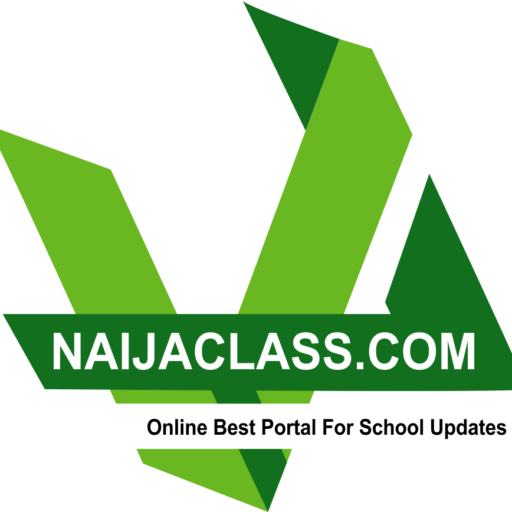Welcome to “Naijaclass Academy“ For Neco 2025 Marketing Question And Answer Expo
Thursday 26th June, 2025


MARKETING OBJ
01-10: EBBCCBCAAD
11-20: BBCDEDBEAE
21-30: CBCACBAEEC
31-40: AABABDBAAA
41-50: EEBCBDBEAD
51-60: BBCCDBDDCE
==============================================
INSTRUCTIONS: ANSWERS ANY FIVE QUESTIONS ONLY
==============================================
(1ai
[in a Tabular form
=Need=
(PICK ANY TWO)
(i) Essential for survival.
(ii) Limited and universal.
(iii) Must be satisfied to maintain life and health.
(iv) Examples include food, water, and shelter.
(v) Prioritized before wants in decision-making.
(vi) Do not change much over time.
=Want=
(PICK ANY TWO)
(i) Not necessary for survival.
(ii) Unlimited and vary between individuals.
(iii) For comfort, pleasure, or luxury.
(iv) Examples include gadgets, designer clothes, and vacations.
(v) Considered only after needs are met.
(vi) Often change with trends and preferences.
(1bi)
Value refers to the overall benefit a customer perceives from a product or service compared to what they give up to get it, such as time, money, or effort. It is what determines customer satisfaction and loyalty. High value means the customer feels they got more benefits than the cost they paid.
(1bii)
Exchange is a fundamental concept in marketing where two or more parties trade something of value. For example, a customer gives money to a seller in return for goods or services. It involves mutual agreement and is the basis of all business transactions.
(1biii)
A service is an intangible product that cannot be touched, seen, or stored but is offered to fulfill customer needs. Services include activities like teaching, banking, transport, or medical care. Unlike goods, services are consumed at the point of delivery and often involve direct interaction with the provider.
(1biv)
A transaction is a completed deal between a buyer and a seller involving the exchange of goods, services, or money. It usually includes an offer, acceptance, payment, and delivery. Transactions are recorded for business tracking and are essential for financial and customer relationship management.
==============================================.
(2a)
The marketing environment consists of external and internal factors that affect a company’s ability to build and maintain successful relationships with customers.
(2bi)
The product is the core offering of a business that is designed to satisfy customer needs and wants. It can be a physical good, a service, or a combination of both. Important aspects of the product include its design, features, quality, packaging, and branding. A good product must solve a problem or fulfill a desire to be successful in the market.
(2bii)
Price is the amount of money a customer is willing to pay for the product or service. It directly affects the company’s revenue and profit. Pricing strategies can include discounts, premium pricing, competitive pricing, and more. The price must reflect the perceived value of the product and consider factors like production cost, competition, and market demand.
(2biii)
Place refers to the distribution channels and locations used to deliver the product to customers. It involves selecting the right outlets, logistics, inventory management, and ensuring that the product is available where and when customers need it. Effective placement ensures easy access and convenience for the customer.
(2biv)
Promotion includes all the communication methods used to inform potential customers about the product and persuade them to purchase it. This includes advertising, personal selling, sales promotions, direct marketing, and public relations. The goal of promotion is to increase awareness, generate interest, and drive sales.
==============================================
(3a)
A market is a platform, physical or virtual, where buyers and sellers come together to exchange goods, services, or information. It involves demand, supply, and price, and helps determine how resources are distributed in an economy.
(3bi)
=Consumer Market=
(PICK ANY TWO)
(i) Buyers purchase goods for personal use.
(ii) Large number of individual buyers.
(iii) Purchases are usually in small quantities.
(iv) Emotional and personal factors influence buying decisions.
(v) High level of advertising and brand loyalty.
(vi) Products are often standardized and mass-produced.
(vii) Frequent purchases of everyday items.
=Organisational Market=
(PICK ANY TWO)
(i) Buyers purchase goods for business or production use.
(ii) Fewer but larger buyers.
(iii) Purchases are often in bulk.
(iv) Decisions are based on logic, value, and cost-effectiveness.
(v) Longer and more formal buying process.
(vi) Often involves contracts and negotiations.
(vii) Buyers may require customized products or services.
=EXPLANATION=
=Consumer Market=
(PICK ANY TWO)
(i) Buyers purchase goods for personal use: Individuals in the consumer market buy products to satisfy personal or household needs, such as food, clothing, or electronics, rather than for resale.
(ii) Large number of individual buyers: The consumer market consists of millions of individuals and households, making it broad and highly diverse.
(iii) Purchases are usually in small quantities: Consumers typically buy items in limited amounts for daily or short-term use, unlike bulk purchases in business markets.
(iv) Emotional and personal factors influence buying decisions: Consumer choices are often influenced by personal preferences, peer pressure, social trends, and emotions like trust or excitement.
=Organisational Market=
(PICK ANY TWO)
(i) Buyers purchase goods for business or production use: Organizations buy products to help run their operations, manufacture other goods, or resell them for profit.
(ii) Fewer but larger buyers: Unlike the consumer market, the number of buyers is small, but each buyer often makes larger, more valuable purchases.
(iii) Purchases are often in bulk: Organizations buy in large quantities to meet production needs, reduce costs, and manage supply efficiently.
(iv) Decisions are based on logic, value, and cost-effectiveness: Organisational purchases involve analysis and planning, focusing on long-term benefits, quality, and return on investment rather than emotions.
==============================================
(4a)
Consumer behaviour is the study of how individuals or groups select, buy, use, and dispose of products or services to satisfy their needs and wants. It looks at the factors that influence their decisions, such as culture, lifestyle, income, and personal preferences.
(4b)
(PICK ANY FOUR)
(i) Culture: Culture shapes a person’s values, beliefs, and behaviours. It influences what people consider important, acceptable, or desirable when making buying decisions.
(ii) Social class: People from different social classes tend to have varying preferences and purchasing power. Income, occupation, and education often determine one’s social class.
(iii) Family: Family members can influence the buying choices of an individual. For example, parents may decide what to buy for the household, while children may influence those choices.
(iv) Personal income: Income affects what people can afford. Those with higher income may buy premium products, while those with lower income may choose more affordable options.
(v) Lifestyle: A person’s lifestyle, including their interests, activities, and opinions, affects the type of products they are attracted to and how they spend money.
(vi) Age and gender: Different age groups have different needs. For example, teenagers may prefer trendy items, while older people may prioritize comfort and durability. Gender also plays a role in product preferences.
(vii) Education level: People with higher education may be more informed and selective about their purchases. They often research products before buying and focus on quality or value.
(viii) Peer group and reference group: Friends, colleagues, and social circles can heavily influence consumer choices, as individuals often buy products recommended or used by those around them.
==============================================
(5)
(PICK ANY FIVE)
(i) Market Demand: The level of customer demand in the market directly affects pricing decisions. When many customers are interested in your product and willing to buy, you may be able to increase the price and still maintain strong sales. On the other hand, when demand is low, you might need to lower prices or offer discounts to attract buyers and remain competitive.
(ii) Competition: The presence and pricing of competitors offering similar products can influence how you price your own. If competitors are selling at a lower price, you may have to adjust your price downward or improve the value of your product through better service, packaging, or quality. Understanding your competitors’ strategies helps you position your product effectively in the market.
(iii) Cost of Raw Materials and Supplies: If the prices of raw materials or components you use to make or sell your product increase, your production cost also rises. To maintain profit margins, you may need to increase your selling price. For example, if you run a bakery and the price of flour goes up, your overall cost of making bread increases, which could lead to a price adjustment.
(iv) Economic Conditions: The overall state of the economy influences consumer spending. During periods of inflation, prices for goods and services generally rise, and you may have to increase your product prices to match rising costs. In a recession, however, consumers spend less, so you may need to reduce your prices to remain affordable and attract customers.
(v) Government Policies and Regulations: Policies such as taxes, tariffs, import duties, and price controls can affect your pricing decisions. For example, if the government increases VAT or introduces a new import tax, the cost of importing or selling certain products may go up, forcing you to raise prices. Compliance with such policies is necessary to avoid penalties.
(vi) Exchange Rates (for imported goods): If your business depends on imported goods or materials, fluctuations in foreign exchange rates can significantly affect your costs. A weaker local currency means you pay more to import products, which increases your cost and may require you to raise your prices to protect your profit margin.
(vii) Seasonal Factors: Seasons and holidays can impact product prices. During peak seasons, such as Christmas or festive periods, demand for certain products increases, allowing you to raise prices. During off-seasons, the same products may have less demand, requiring you to lower prices or run promotions to keep sales moving.
==============================================
(6a)
Distribution is the process of moving goods from the producer to the final consumer. It involves various channels like wholesalers, retailers, and agents to ensure products reach buyers at the right time and place.
(6b)
(PICK ANY FOUR)
(i) Nature of the product
(ii) Target market
(iii) Cost of distribution
(iv) Control over sales process
(v) Speed of delivery
(vi) Business resources
==============================================
(7a)
A marketing intermediary is a business or individual that helps a company promote, sell, and distribute its products to final buyers. They include agents, wholesalers, retailers, and distributors who perform various marketing functions that make products more accessible and appealing to consumers.
(7b)
(PICK ANY FOUR)
(i) Facilitating Exchange: Middlemen bridge the gap between producers and consumers by ensuring goods are available where and when needed, making the buying and selling process easier.
(ii) Risk Bearing: They take on various risks such as spoilage, theft, price changes, and damage during storage and transportation.
(iii) Storage and Inventory Management: Middlemen store products until they are needed, helping to stabilize supply and prevent market shortages or gluts.
(iv) Financing: They often provide credit facilities to retailers or even buy goods in large quantities, easing the producer’s financial burden.
(v) Market Information: Middlemen gather and relay valuable information about market trends, customer preferences, and competitor activities to producers.
(vi) Promotion of Goods: They help in advertising, personal selling, and other promotional activities to increase product awareness and demand.
(vii) Bulk Breaking: Middlemen purchase goods in bulk from manufacturers and sell them in smaller quantities to retailers or end-users, making them more accessible.
(viii) After-Sales Services: They may provide services such as installation, warranty handling, repairs, and customer support to enhance customer satisfaction and loyalty.
==============================================
(8a)
Adaptation of marketing plans for international marketing refers to the process of modifying a company’s marketing strategy to fit the cultural, economic, legal, and political environment of the foreign market. This may include changes in product features, pricing, packaging, promotional strategies, or distribution channels to better appeal to local preferences.
(8b)
(PICK ANY FOUR)
(i) Exporting: Ogodo Enterprises can sell goods directly or through intermediaries to foreign markets. It’s the simplest and most cost-effective entry method.
(ii) Licensing: Ogodo can permit a foreign firm to produce and sell its product in exchange for royalties or fees. This reduces financial risk while expanding reach.
(iii) Franchising: Similar to licensing, but more structured, franchising allows Ogodo to grant the rights to operate under its brand and business model in foreign markets.
(iv) Joint Ventures: Ogodo can partner with a local business in another country to share resources, risks, and profits while benefiting from local knowledge and networks.
(v) Foreign Direct Investment (FDI): This involves setting up physical operations, such as a manufacturing plant or sales office, in the foreign country to gain full control of operations.
(vi) Online/Internet Marketing: Using digital platforms, Ogodo can market and sell products globally with lower operational costs and broader reach.
(vii) Piggyback Marketing: Ogodo can partner with another local or international firm already operating in foreign markets to include its products in their distribution channels.
(viii) Turnkey Projects: Ogodo may build and set up production or operational facilities for a foreign client and hand it over after completion, earning fees and expertise recognition.
==============================================
(9)
(i) Conduct Market Research: This is the first step and involves identifying your target market, understanding customer needs, preferences, income levels, and purchasing behavior. It also includes analyzing competitors and market trends. Market research helps in making informed decisions on what products or services to offer.
(ii) Develop a Business Plan: A well-prepared business plan outlines your business goals, target market, marketing strategies, financial projections, startup capital, and operations model. It acts as a roadmap for running the marketing outlet and is often required when seeking funding or investment.
(iii) Choose a Strategic Location: The location of your marketing outlet is crucial for visibility, accessibility, and customer traffic. A good location should be close to your target audience and should have necessary infrastructure like roads, electricity, and security. Consider foot traffic and nearby competition when selecting a site.
(iv) Obtain Licenses and Register the Business: Legalizing your business is essential. You must register your outlet with the appropriate government authorities and obtain necessary licenses or permits. This step helps build trust with customers and avoids legal complications.
(v) Stock and Equip the Outlet: Purchase the initial inventory and necessary equipment such as shelves, computers, point-of-sale systems, and signage. The store layout should be appealing and easy for customers to navigate. Establish relationships with reliable suppliers to maintain a steady flow of goods.
How to get Neco 2025 Marketing Question And Answer Expo before the exam?
==================
It is important to note that Naijaclass.com is the only website that has the above listed 2025/2026 Neco Expo Daily Subscription Package. However, any website who copy any of the packages listed above will be reported for content theft and have their site removed from Google and other search engines.
==================





Be the first to comment